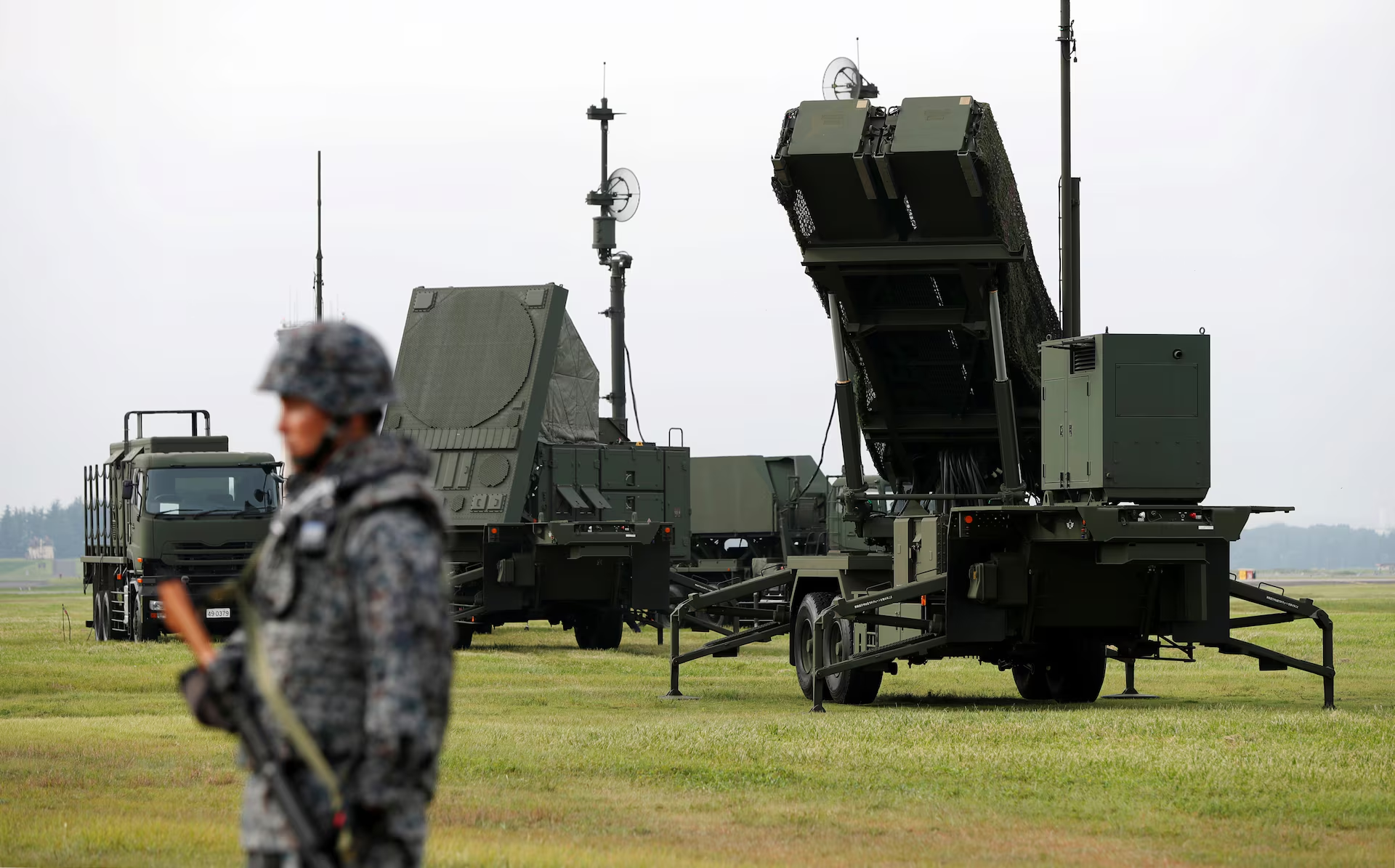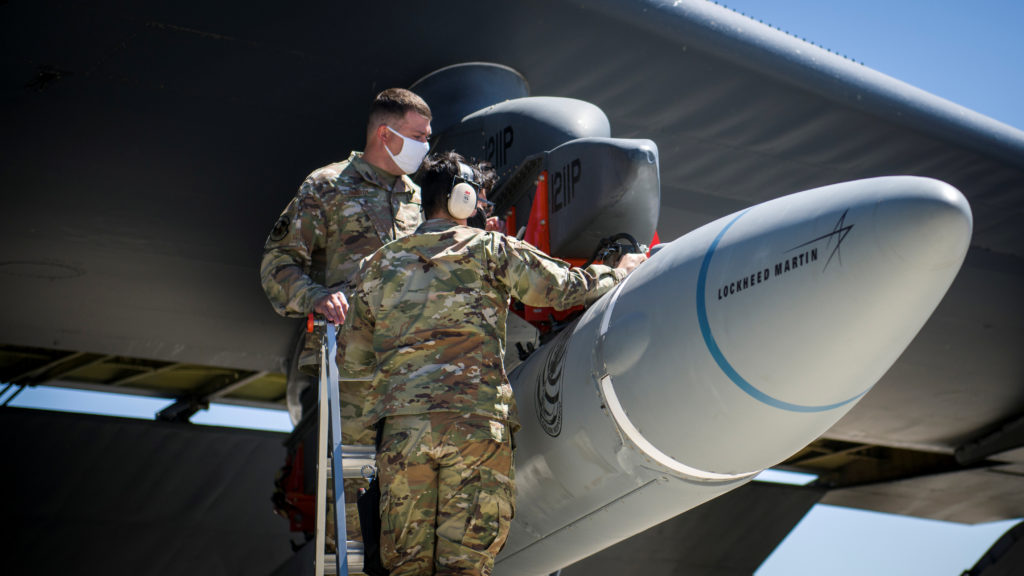Amid rising concerns about China’s potential deployment of hypersonic missiles capable of targeting U.S. ships in the Pacific, the U.S. Navy is advancing a plan to equip its vessels with Patriot interceptor missiles. Two senior defense officials disclosed that the U.S. Navy is considering the Patriot Advanced Capability-3 Missile Segment Enhancement (PAC-3 MSE), which is known for its maneuverability and currently used by the U.S. Army for land-based missile defense. This decision highlights the urgent need to counter China’s rapidly advancing missile technology, including hypersonic glide vehicles, which pose a significant threat to naval assets due to their high speed and evasive capabilities.
The PAC-3 MSE, developed by Lockheed Martin, would add an extra layer of defense to Navy ships, enhancing current missile defense systems not yet tested against advanced hypersonic threats. Tom Karako, a missile defense analyst at the Center for Strategic and International Studies, highlighted that demand for these interceptors is extremely high, with both foreign allies and the U.S. Army seeking increased production. To meet these growing requirements, the U.S. has tapped Japan as a production site for Patriot missiles, and Lockheed Martin is working to establish an additional production line for the missile seekers in Florida. This expanded production could potentially alleviate demand pressures and support both land-based and naval applications of the PAC-3 MSE system.

The U.S. Navy has not specified the exact number of PAC-3 interceptors it requires but considers the addition of this missile crucial in facing China’s evolving missile threat. A PAC-3 missile uses a “hit-to-kill” approach, where it physically strikes a target rather than merely exploding near it, an advantage against hypersonic threats due to its accuracy and high probability of destruction. This approach differs from the Navy’s SM-6 interceptors, which, while having longer ranges and the ability to engage targets in space, lack the PAC-3’s agility and “hit-to-kill” precision. Additionally, PAC-3’s smaller size allows for easier deployment and the possibility of carrying more interceptors per ship.
In addition to its shorter range, the PAC-3 has successfully demonstrated its effectiveness in intercepting advanced threats in recent conflicts, such as Ukraine, where it has downed Russian hypersonic missiles. The Navy sees the PAC-3 as a valuable complement to its existing missile arsenal, which includes the Aegis Combat System, an integrated naval defense platform that utilizes SPY-1 radar as its primary sensor. However, further testing is needed to integrate the PAC-3 with the Aegis system’s communication and radar networks, including a potential launch test from a Navy ship. If successful, these interceptors could become an integral component of U.S. defensive strategies in the Indo-Pacific.

China’s hypersonic capabilities include the DF-27, an anti-ship ballistic missile armed with a hypersonic glide vehicle capable of long-range precision targeting, even against moving ships. This missile, which can reportedly reach distances up to 8,000 km (around 5,000 miles), has been a focal point in U.S. defense planning given its evasion capabilities and threat to naval assets in the Pacific. China’s anti-ship arsenal also includes the DF-21D, or “carrier killer,” and the DF-26, an intermediate-range ballistic missile (IRBM) that poses similar threats to U.S. carriers and other key naval vessels.
Testing for deploying PAC-3 interceptors aboard U.S. ships began last May on a simulated Aegis ship with a Mk. 70 vertical launcher, but the interceptors have yet to be installed on any operational vessel. Nevertheless, PAC-3’s success in intercepting diverse aerial and ballistic threats in the Middle East and Ukraine, such as Russia’s advanced Kinzhal missiles, has boosted its appeal within the Navy. This move to add PAC-3 interceptors aligns with broader U.S. military strategies in the Indo-Pacific, which focus on deterring Chinese aggression by strengthening allied defense networks and enhancing missile capabilities.
A crucial advantage of PAC-3 is its relatively compact size and weight compared to the Navy’s SM-6 and SM-3 interceptors. Weighing around 300 kg (approximately 660 lbs) and measuring about 9 cm in diameter, the PAC-3 is smaller and more agile than its naval counterparts, which weigh up to 1,500 kg. Despite its size, the PAC-3 maintains a similar price point to the SM-6, estimated at roughly $4 million per missile, making it cost-effective for widespread deployment. Its smaller size also allows for increased magazine depth, potentially enabling Navy ships to carry more interceptors, providing greater defensive capacity against a variety of aerial threats.

China’s development of maneuverable hypersonic weapons highlights the urgency for the U.S. to bolster its defenses, particularly in areas where U.S. and allied forces may be exposed to advanced anti-ship threats. According to Tim Wright of the International Institute of Strategic Studies, the DF-27 hypersonic glide vehicle has the capability to evade traditional missile defenses, making it one of the most sophisticated anti-ship threats in China’s arsenal. U.S. officials worry that this technology will enable China to strike naval targets with unprecedented precision, forcing the U.S. to consider both defensive and offensive measures to maintain strategic stability in the Indo-Pacific region.
The decision to deploy PAC-3 interceptors aboard Navy ships illustrates the evolving military competition in the Indo-Pacific as the U.S. confronts new challenges from China’s missile advancements. By adding these interceptors to their arsenal, the U.S. aims to fortify its defense posture, ensuring that its naval forces can effectively counter an array of threats posed by hypersonic glide vehicles and advanced ballistic missiles.




